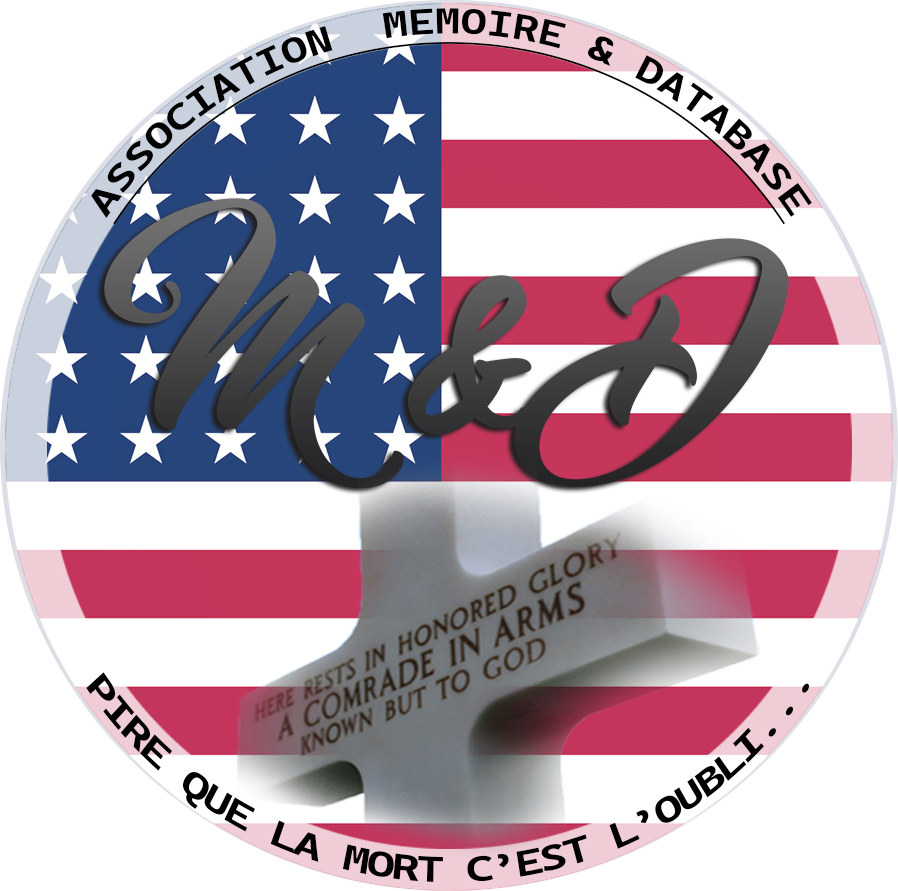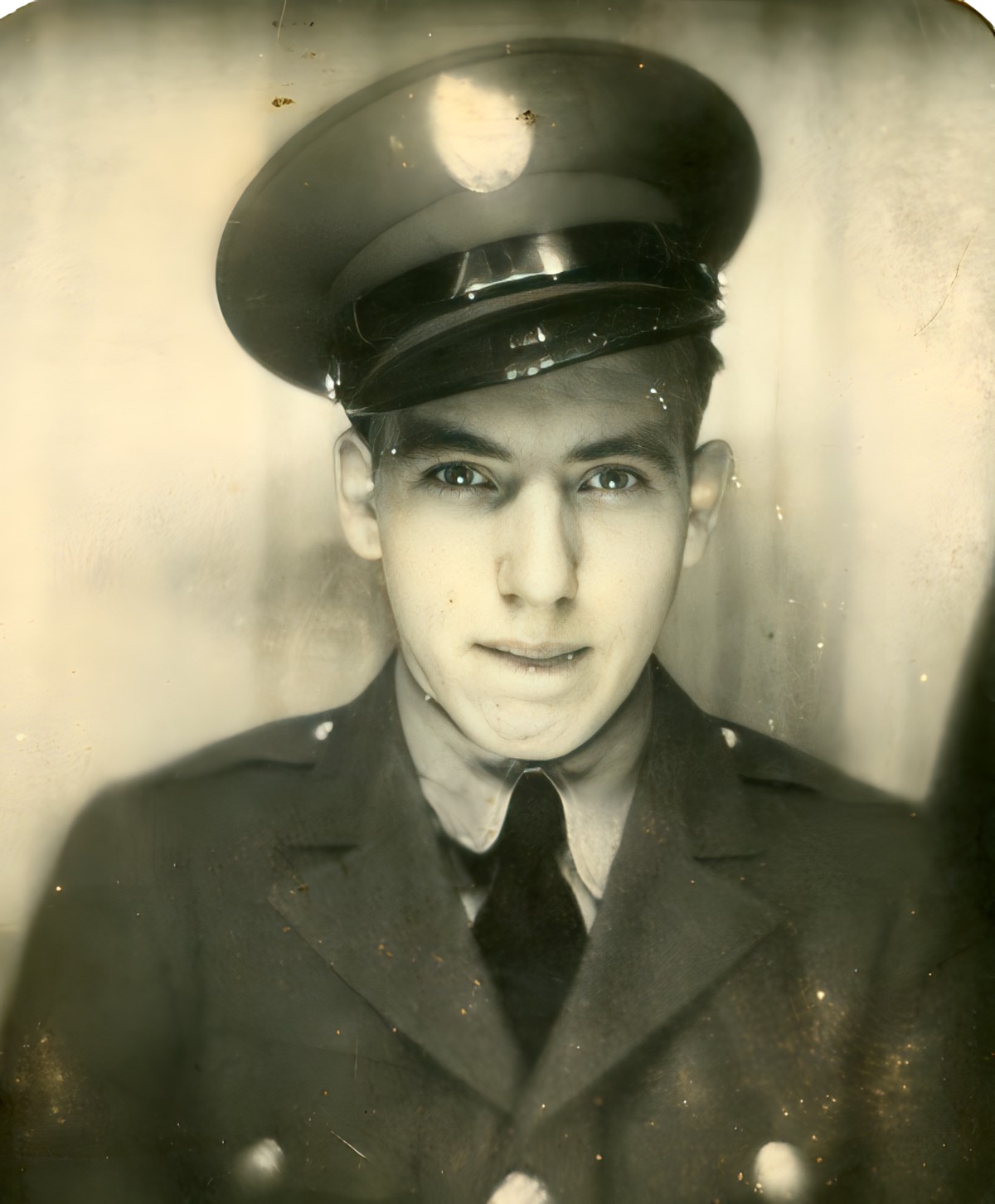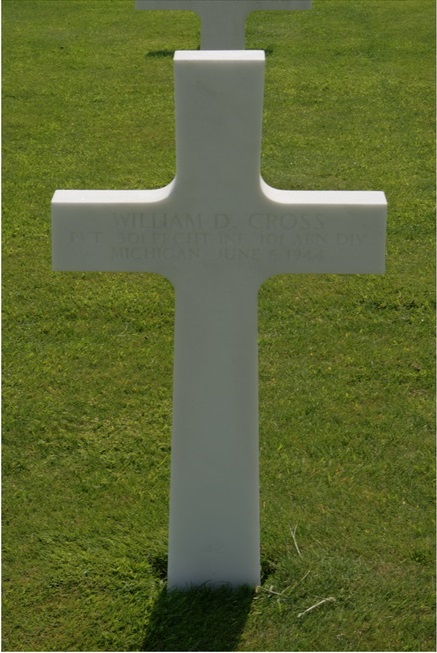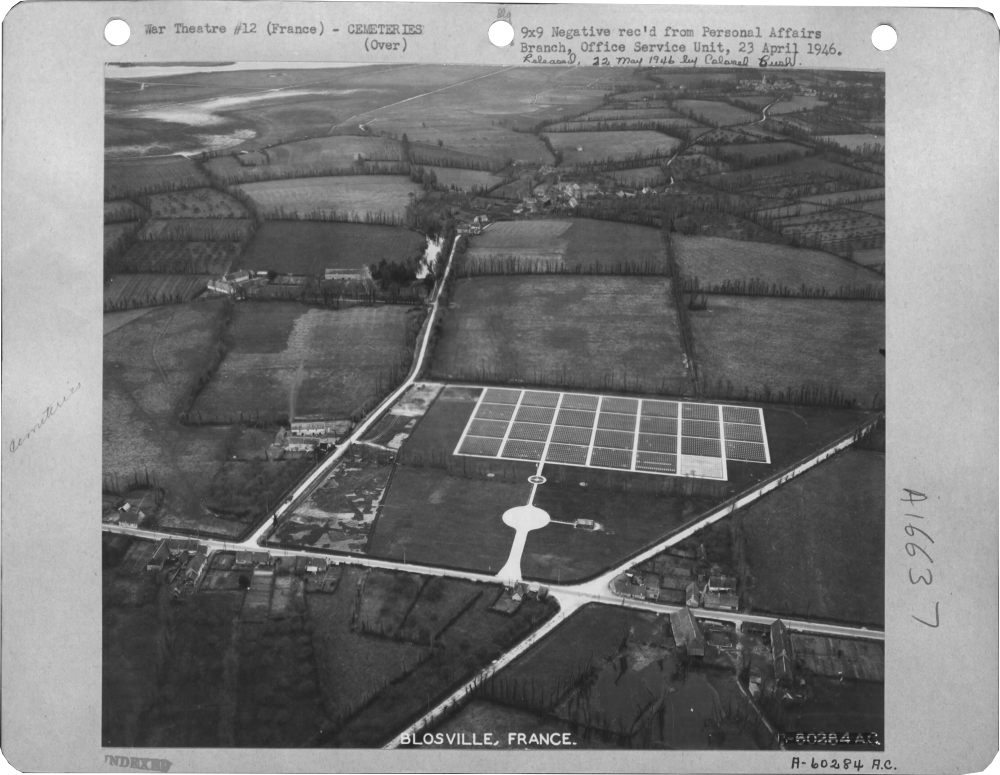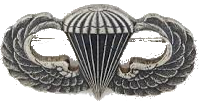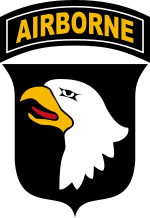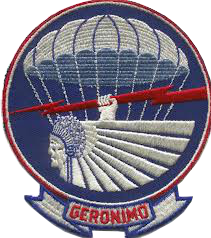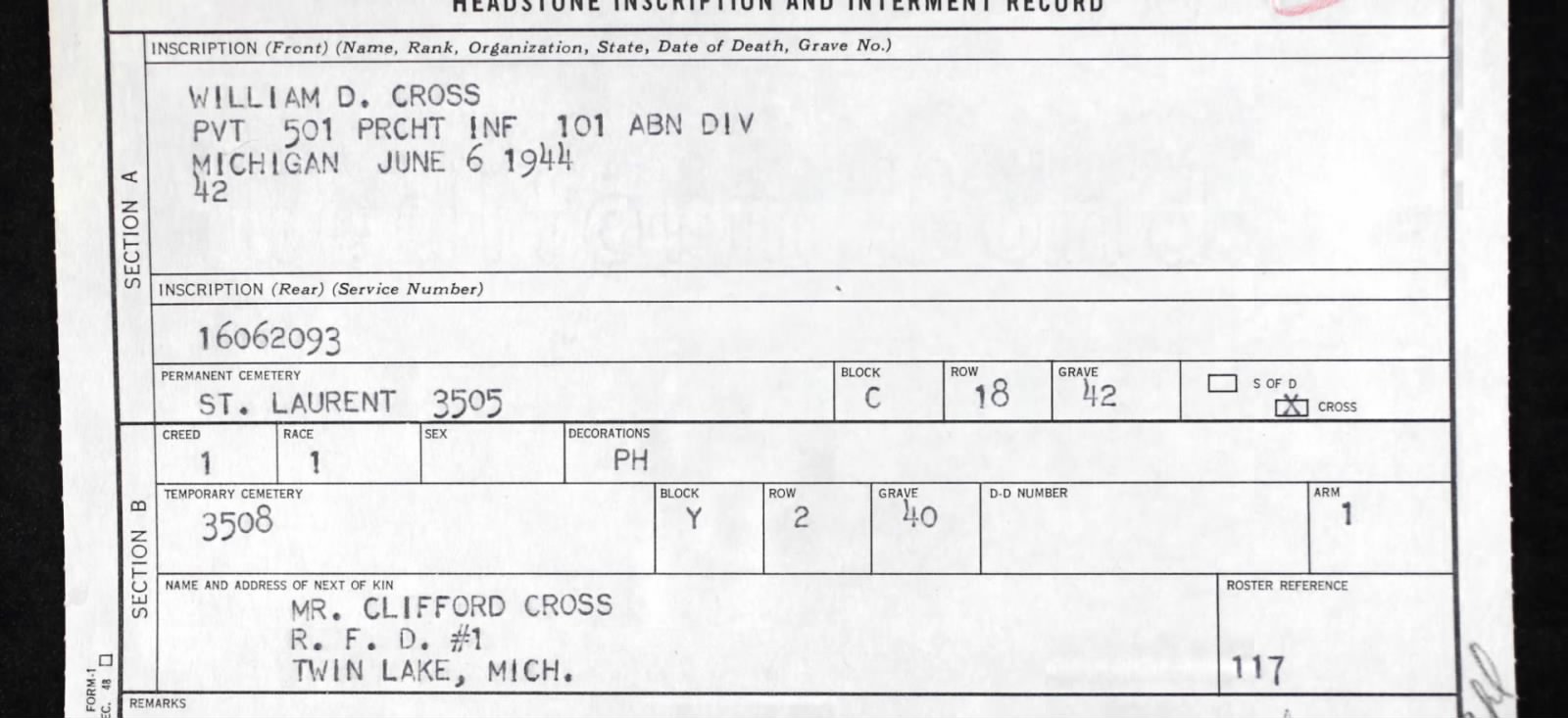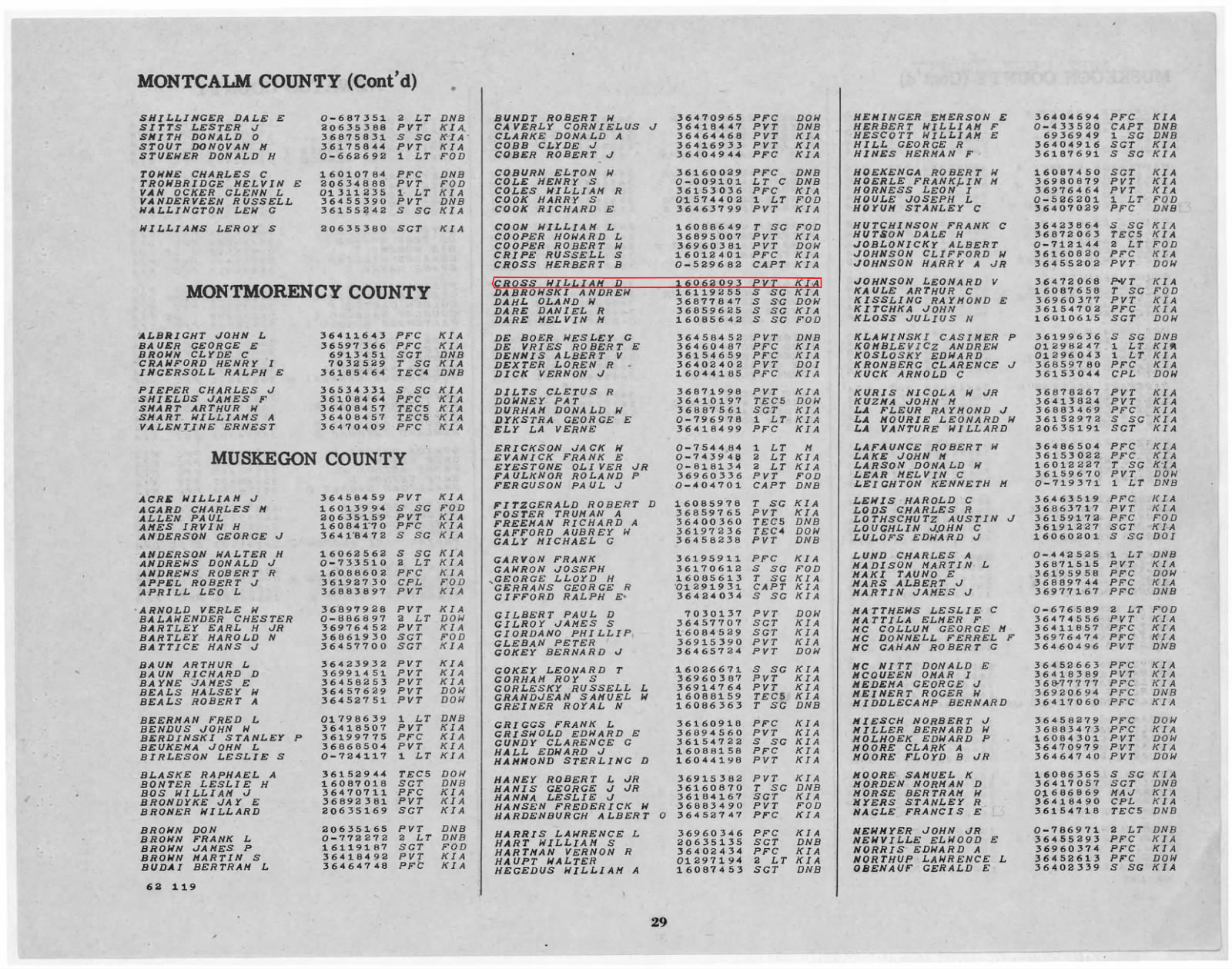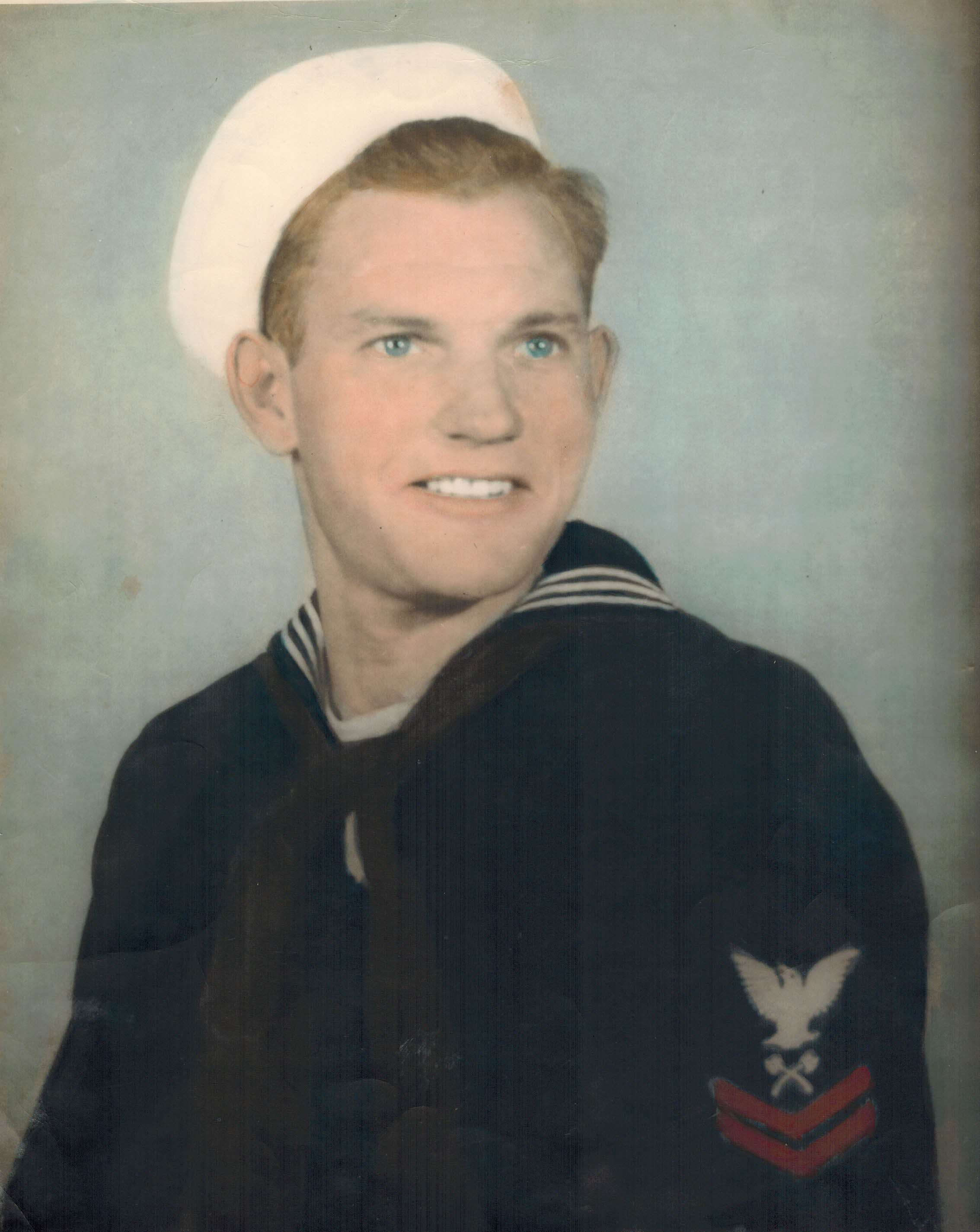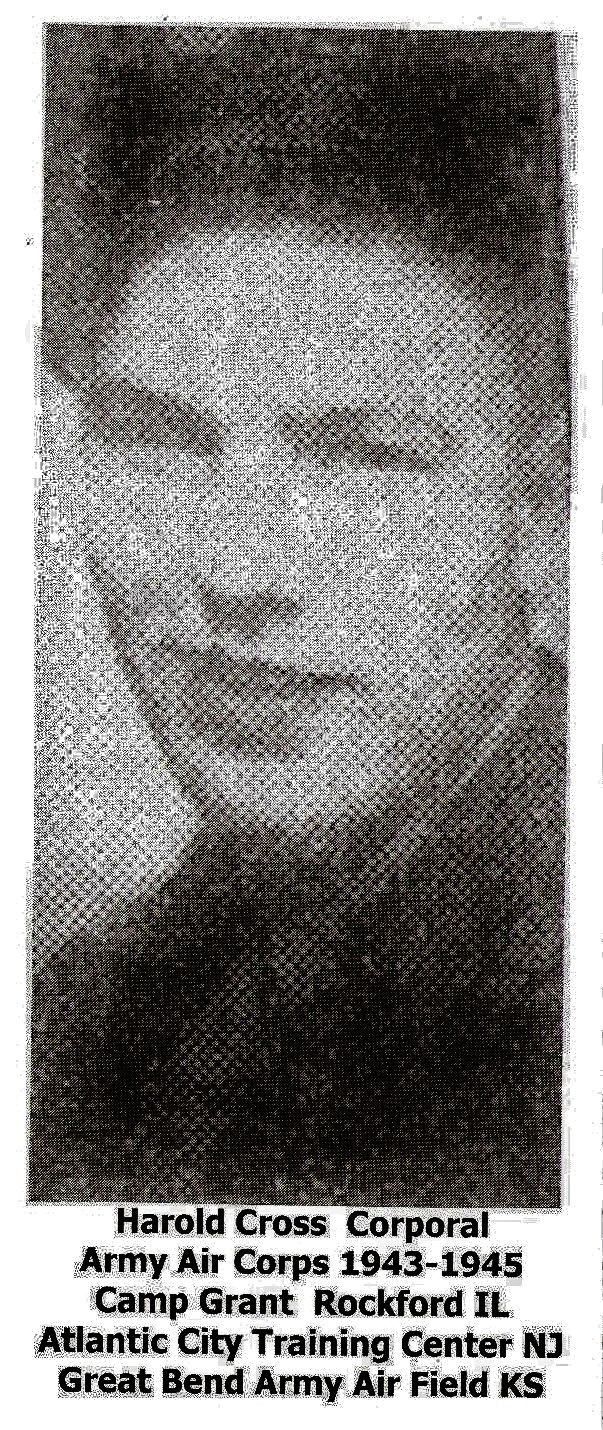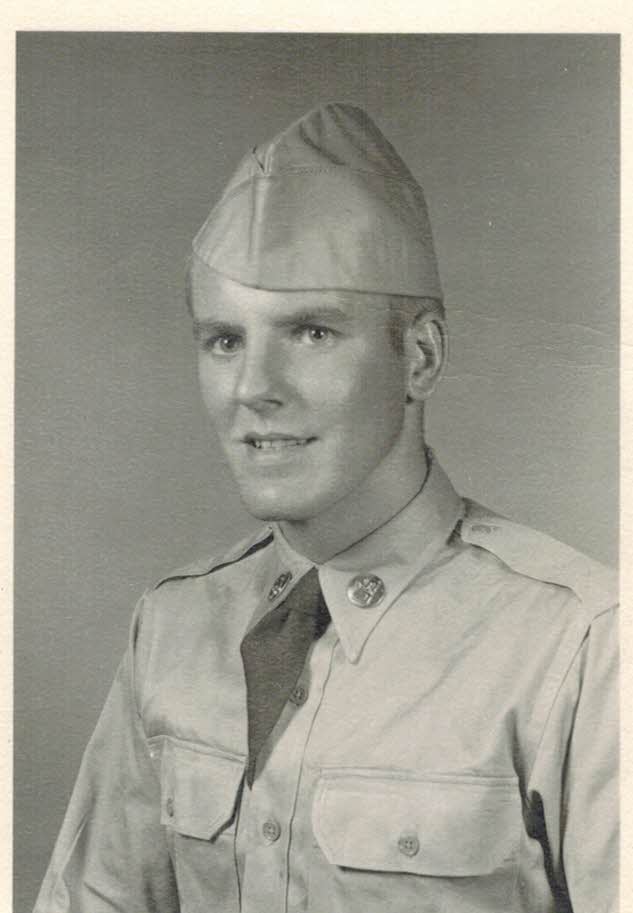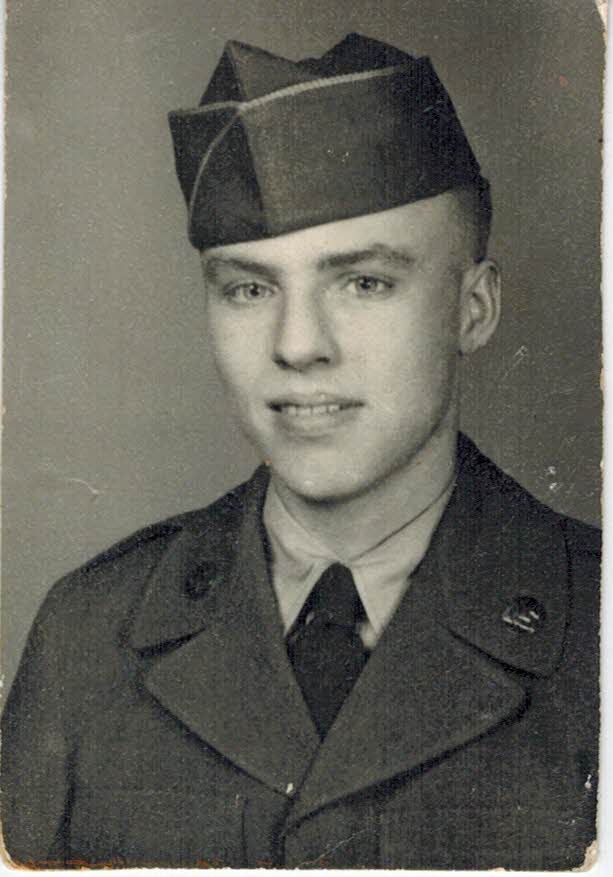|
William D. CROSS
| ||||||||||||||||||||||||
|---|---|---|---|---|---|---|---|---|---|---|---|---|---|---|---|---|---|---|---|---|---|---|---|---|
|
Source : KatieDee (Ellen Marchese)
| ||||||||||||||||||||||||
| NUMBER OF SERVICE | 16062093 | |||||||||||||||||||||||
| AGE | 20 yo | |||||||||||||||||||||||
| DATE OF BIRTH | 8 January 1924 Muskegon, Muskegon County, MICHIGAN | |||||||||||||||||||||||
| ENLISTMENT STATE | MICHIGAN | |||||||||||||||||||||||
| FAMILY |
Parents : Clifford C & Orabelle Eaton CROSS Siblings : Gordon D., Harold J., Carol L, Douglas Daniel & Charles David | |||||||||||||||||||||||
| RANK | Private | |||||||||||||||||||||||
| FONCTION | Paratroopers | |||||||||||||||||||||||
| JOB BEFORE ENLISTEMENT |  | |||||||||||||||||||||||
| DATE of ENLISTEMENT | 10 February 1942 Detroit MICHIGAN | |||||||||||||||||||||||
| COMPANY | Company B | |||||||||||||||||||||||
| BATTALION | 1st Battalion | |||||||||||||||||||||||
| REGIMENT | 501st Parachute Infantry Regiment | |||||||||||||||||||||||
| DIVISION | 101st Airborne Division | |||||||||||||||||||||||
| DATE OF DEATH | 6 June 1944 |
Source : Dominique Potier | ||||||||||||||||||||||
| STATUS | KIA | |||||||||||||||||||||||
| PLACE OF DEATH | Saint-Georges-de-Bohon | |||||||||||||||||||||||
| CEMETERY TEMPORARY |
CEMETERY TEMPORARY of Blosville N°3508
| |||||||||||||||||||||||
| CEMETERY | NORMANDY AMERICAN CEMETERY of Colleville | |||||||||||||||||||||||
| GRAVE |
| |||||||||||||||||||||||
| DECORATION |
| |||||||||||||||||||||||
| ||||||||||||||||||||||||
| STORY | ||||||||||||||||||||||||
|
Source : redandbon864 (Fold3) | ||||||||||||||||||||||||
|
Source : Fold 3 | ||||||||||||||||||||||||
|
By : redandbon864 (Fold3)
Early LifeWilliam D. Cross was born on 8 January 1924 in Muskegon, Muskegon County, Michigan. His father Clifford C. Cross, born 25 September 1898 in Scottville, Mason County, Michigan, died 25 February 1957 in Fremont, Newaygo County, Michigan, was a Truck Driver. His mother Orabelle “Cora” Eaton was born on 23 August 1901 in Michigan and died on 19 November 1951 in Muskegon, Muskegon County, Michigan. William’s parents were married on 10 May 1919 in Muskegon, Michigan. William was the third of seven children in the family; he had two older brothers, two younger brothers and two younger sisters.
MilitaryWilliam D. Cross enlisted in the U.S. Army on 10 February 1942 in Detroit, Michigan. After basic training and additional follow-on training, he was assigned to Company A, 501st Parachute Infantry Regiment, 101st Airborne Division. The 501st Parachute Infantry Regiment was activated at Camp Toccoa, Georgia on 15 November 1942. The 501st was part of the 101st Airborne Division during World War II and the Vietnam War. Camp Toccoa, GA, c. 1942 - The famous test platoon, the prime ancestor of all American parachute units, provided the nucleus of the 1st Parachute Battalion, which in turn provided part of the cadre, the unit number, the genealogical lineage and the heraldic background of the 501st Parachute Regiment. Its initial group of officers was hand-picked by its first commander, Colonel Howard R. Johnson. Known by his peers as "Skeets", he was very much in the swashbuckling mold of most of the original parachute regimental commanders, of whom the popular saying was "To command a parachute unit, you don't have to be nuts, but it helps!" Johnson attended the Naval Academy for two years; he boxed while a midshipman. He had transferred to the Army after leaving Annapolis and had most recently been at the tank destroyer center before volunteering for parachute duty. To say that he took to parachuting is a gross understatement: he ate, slept, and breathed it, and jumped whenever he possibly could, often jumping many times in a single day. His nickname among his men became "Jumping Johnson." He was a zealot on physical conditioning, for himself and everyone in his regiment, and personally led calisthenics, running and all other physical activities. He set a record for running up Currahee Mountain (which loomed over Camp Toccoa) and challenged anyone in the regiment to beat his time. A heavy punching bag hung outside his quarters, and when not punching that, Johnson could often be seen throwing his huge knife at hanging plywood replicas of Hitler and Hirohito. All members of the regiment were parachute volunteers, but only a minor fraction were actually qualified jumpers during training at Camp Toccoa, GA. So, when that very arduous training was over in March 1943, the unit marched to Atlanta, GA, a distance of 105 miles (169 km). They then moved to Fort Benning, GA, to jump train all members not previously qualified. With jump training over, the regiment was assigned to the Airborne Command at Camp MacKall, NC. This was its home base during prolonged maneuvers in North Carolina, Tennessee, and Louisiana, and until January 1944, when the regiment deployed to England, by way of Camp Myles Standish, MA. Once in England the 501st became a permanent attachment of the 101st Airborne Division and was a vital part of that famous unit for the duration of World War II. In England, training was hard, realistic and became increasingly oriented toward an airborne assault into German-held Europe. Although none of the soldiers knew this initially, the regiment was training for Operation Overlord, the secret allied plan for the combined air, naval, amphibious, and airborne operations to breach Hitler's "Atlantic Wall." As D-Day drew closer, a few key commanders and staff were briefed on the part the 101st would play in Operation Overlord. Then with D-Day just days away, the 501st with the rest of the division was sequestered in well-guarded marshaling camps where every man finally learned his own mission and the overall mission of the 501st and the 101st Airborne Division. These very extensive and intensive briefings were to later prove vital during actual operations. The 501st (less 3rd Battalion) took off from Merryfield Airport at 2245, 5 June 1944, while the 3rd Battalion departed at the same time from Welford. All units flew across the English Channel and were set to drop into Normandy, five hours prior to the seaborne landing. The 501st drop zones were north and east of Carentan. Two battalions were to seize key canal locks at La Barquette and destroy bridges over the Douve River, while the third battalion was in division reserve. The troop aircraft formations were widely scattered due to a combination of low clouds, poor visibility and enemy anti-aircraft fire. This caused highly scattered drops and units were widely dispersed across the battlefront. The ensuing action bore little resemblance to their briefing, but because the soldiers were well prepared, the regiment and the division accomplished its multiple missions, but none of them as rehearsed. The success was credited to the initiative, stamina, and daring of individual parachutists, who decided how best to accomplish some part of the overall mission. The capture of a key causeway from Utah Beach at Pouppeville by a scratch force of about 100 officers and men, formed around a nucleus from the 3rd Battalion (division reserve) of the 501st, was typical. Members of this ad hoc force included both General Maxwell Taylor and Assistant Division Commander Gerald Higgins. General Taylor later quipped that, "Never were so few led by so many." Fierce fighting in Normandy by no means ended with D-Day, but continued with important results in assisting the amphibious landings and joining the beach at Utah to that at Omaha. The efforts of the 501st came at high cost: the regiment lost 898 men killed, wounded, missing, or captured. | ||||||||||||||||||||||||
Activated/Activé |
Normandy/Normandie |
| 15 Aug 1942 | Days of Combat/Jour de Combat 214 |
| Casualties/Victimes 9 328 | |
Entered Combat/Entré au combat |
|
| 6 Jun1944 D-Day | |
|
Commanding Generals/Commandants généraux Maj. Gen. William C. Lee (Aug 42 - Mar 44) |
Campaigns/CampagnesNormandy (6 Jun 44 - 24 Jul 44) Rhineland (15 Sep 44 - 21 Mar 45)
|
PLAN DE ROUTE DE LA CAMPAGNE - CAMPAIGN ROUTE MAP |
|
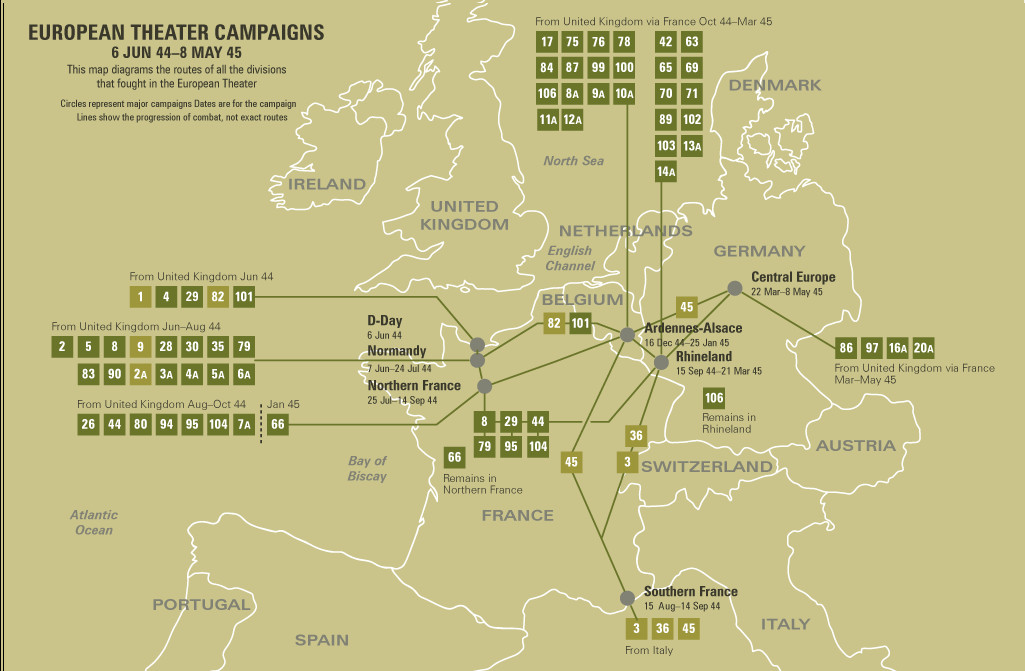 |
|
DIVISION CHRONICLEThe 101st Airborne arrived in England, 15 September 1943, and received additional training in Berkshire and Wiltshire. On 6 June 1944, the Division was dropped into Normandy behind Utah Beach. Against fierce resistance it took Pouppeville, Vierville, and St. Come du Mont. On the 12th, the stronghold of Carentan fell, and after mopping up and maintaining its positions, the Division returned to England, 13 July, for rest and training. On 17 September 1944, taking part in one of the largest of airborne invasions, the 101st landed in Holland, took Vechel and held the Zon bridge. St. Oedenrode and Eindhoven fell after sharp fighting on the 17th and 18th. Opheusden changed hands in a shifting struggle, but the enemy was finally forced to withdraw, 9 October. After extensive patrols, the Division returned to France, 28 November, for further training. On 18 December, it moved to Belgium to stop the German breakthrough. Moving into Bastogne under the acting command of Brig. Gen. Anthony C. McAuliffe, it set up a circular defense and although completely surrounded, refused to surrender on 22 December. Its perimeter held against violent attacks. The 4th Armored Division finally reached the 101st on the 26th and the enemy offensive was blunted. Very heavy fighting continued near Bastogne for the rest of December and January. On 17 January 1945, the Division moved to Drulingen and Pfaffenhoffen in Alsace and engaged in defensive harassing patrols along the Moder River. On 31 January, it crossed the Moder in a three-company raid. After assembling at Mourmelon, France, 26 February 1945, for training, it moved to the Ruhr pocket, 31 March, patrolling and raiding in April and engaging in military government at Rheydt and Munchen-Gladbach. The 101st reached Berchtesgaden by the end of the war and performed occupational duties until inactivation in Germany. |
CHRONIQUE DE DIVISIONLe 101st Airborne est arrivé en Angleterre, le 15 septembre 1943, et a reçu une formation supplémentaire dans le Berkshire et le Wiltshire. Le 6 juin 1944, la division est larguée en Normandie derrière Utah Beach. Contre une résistance féroce, il fallut Pouppeville, Vierville et St. Come du Mont. Le 12, le fief de Carentan est tombé, et après avoir nettoyé et maintenu ses positions, la Division est revenue en Angleterre, le 13 juillet, pour se reposer et s'entraîner. Le 17 septembre 1944, participant à l'une des plus grandes invasions aéroportées, la 101st débarque en Hollande, prend Vechel et tient le pont de Zon. St. Oedenrode et Eindhoven sont tombés après des combats acharnés les 17 et 18. Opheusden a changé de mains dans une lutte changeante, mais l'ennemi a finalement été forcé de se retirer, le 9 octobre. Après de longues patrouilles, la Division revint en France le 28 novembre pour suivre une formation complémentaire. Le 18 décembre, il a déménagé en Belgique pour arrêter la percée allemande. Déménagement à Bastogne sous le commandement de Brig. Général Anthony C. McAuliffe, il a mis en place une défense circulaire et bien que complètement encerclé, a refusé de se rendre le 22 décembre. Son périmètre tenu contre les attaques violentes. La 4e division blindée atteignit finalement la 101e le 26 et l'offensive ennemie fut émoussée. De très violents combats ont continué près de Bastogne pour le reste de décembre et janvier. Le 17 janvier 1945, la division s'est déplacée à Drulingen et à Pfaffenhoffen en Alsace et s'est livrée à des patrouilles de harcèlement défensif le long de la rivière Moder. Le 31 janvier, il a traversé le Moder dans un raid de trois compagnies. Après s'être rassemblé à Mourmelon, France, le 26 février 1945, pour s'entraîner, il s'installa dans la poche de la Ruhr, le 31 mars, patrouillant et faisant des raids en avril et s'engageant dans un gouvernement militaire à Rheydt et Munchen-Gladbach. La 101e a atteint Berchtesgaden à la fin de la guerre et a exercé des fonctions professionnelles jusqu'à l'inactivation en Allemagne. |
| SOURCE INFORMATION & PHOTO | Armydivs.squarespace.com |
|---|
|
Brother of William D |
Gordon D. CROSS
| |
|---|---|---|
| DATE OF BIRTH | 15 March 1920 Muskegon, Muskegon County, MICHIGAN |
Source : KatieDee |
| ENLISTMENT STATE | MICHIGAN | |
| FAMILY |
Parents : Clifford C & Orabelle Eaton CROSS Siblings : William D, Harold J., Carol L, Douglas Daniel & Charles David | |
| RANK | Carpenter's mate 2nd Classs | |
| UNIT |
US Navy
|  |
| SOURCE INFORMATION & SOURCE PHOTO | Findagrave.com | |
|
Brother of William D |
Harold J. CROSS
| |
|---|---|---|
| DATE OF BIRTH | 22 April 1922 Muskegon, Muskegon County, MICHIGAN |
Source : Richard Mullally |
| ENLISTMENT STATE | MICHIGAN | |
| FAMILY |
Parents : Clifford C & Orabelle Eaton CROSS Siblings : Gordon D., William D, Carol L, Douglas Daniel & Charles David | |
| RANK | Corporal | |
| JOB BEFORE ENLISTEMENT | Unskilled machine shop and related occupations | |
| DATE of ENLISTEMENT | 7 April 1943 Kalamazoo MICHIGAN | |
| UNIT | US Army Air Corps |  |
| 1943-45 | ||
| SOURCE INFORMATION & SOURCE PHOTO | Findagrave.com - Aad.archives.gov | |
|
Brother of William D |
Douglas Daniel CROSS
| |
|---|---|---|
| DATE OF BIRTH | 8 December 1933 Muskegon, Muskegon County, MICHIGAN |
Source : KatieDee |
| ENLISTMENT STATE | MICHIGAN | |
| FAMILY |
Parents : Clifford C & Orabelle Eaton CROSS Siblings : Gordon D., Harold J., Carol L, William D & Charles David | |
| UNIT | US Army |  |
| WAR | Korean War | |
| SOURCE INFORMATION & SOURCE PHOTO | Findagrave.com | |
|
Brother of William D |
Charles David CROSS
“Chuck”
| |
|---|---|---|
| DATE OF BIRTH | 1936 |
Source : KatieDee |
| ENLISTMENT STATE | MICHIGAN | |
| FAMILY |
Parents : Clifford C & Orabelle Eaton CROSS Siblings : Gordon D., Harold J., Carol L, Douglas Daniel & William D | |
| UNIT |  | |
| SOURCE INFORMATION & SOURCE PHOTO | Findagrave.com | |
| SOURCE INFORMATION & SOURCE PHOTO | Aad.archives.gov- Findagrave.com - Abmc.gov - Ww2-airborne.us - Fold3.com |
|---|---|
| PROGRAMMER | Henri, Garrett, Clive, Frédéric & Renaud |


